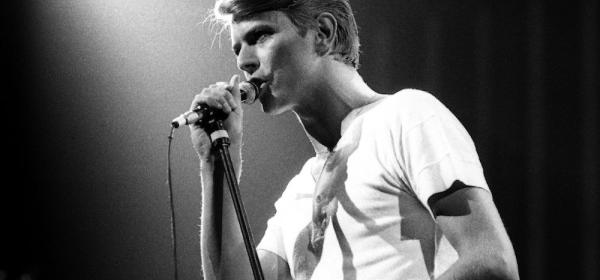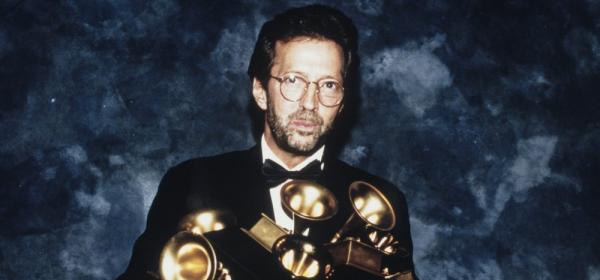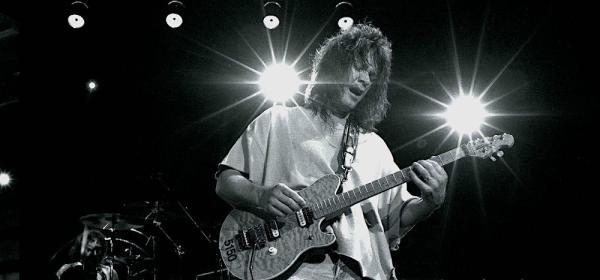
Remarkably, it’s fifty years to the month since David Bowie’s The Man Who Sold the World album was released in the UK in April 1971. Though rightly much admired today, following two complete and utter commercial flops Bowie’s third long-player fared similarly poorly on its initial release, much to the disappointment of everyone involved – not the least, of course, the artist himself. While The Man Who Sold the World did create heightened interest and received critical praise in some industry quarters, its performance in commercial terms was once again underwhelming, to say the least, selling less than 1,500 copies in its first three months. Bowie’s score was now three albums with three different record companies but with almost nothing of note to show for it except the "Space Oddity" single of 1969 that, while achieving significant chart success (#5 on the singles chart), was largely written off as a novelty song timed to coincide with the Apollo 11 moon landing. That he hadn’t followed it up with any further kind of success on either the singles or albums chart conspired to reinforce that one-hit-wonder view. Other single releases had come and gone in the interim and all had sunk without trace. Of The Man Who Sold the World, Bowie would later jokingly acknowledge that “It sold like hotcakes in Beckenham, and nowhere else.” Soon enough, the rest of the world would follow in the footsteps of his loyal home neighbourhood and embrace Bowie as Ziggy Stardust: a brand new rock superstar, unlike anything the world had ever seen before. But, for now, public recognition of David Bowie continued to fall very far short of his obvious talent.
Critically, however, The Man Who Sold the World would deservedly get a second chance in the wake of Bowie’s enormous breakthrough success of the following year. As with his other early albums, most especially his fourth, Hunky Dory, the under-achieving The Man Who Sold the World was destined to ride a wave of renewed interest in the wake of the career-making The Rise and Fall of Ziggy Stardust and the Spiders from Mars (album number 5, 1972). Buoyed on this coat-tail success, The Man Who Sold the World would reach a far more deserving #24 on the album chart, and of course, it has continued selling ever since – quickly coming to be recognised for the early career masterpiece that it is.
David Bowie | “The Man Who Sold The World”
Although her admirable cover version of the album’s title track would gift Scottish singer Lulu a #3 hit on the UK singles chart in 1974 (a cover fully sanctioned and even co-produced by Bowie and Mick Ronson), and Nirvana’s unplugged rendition would also fare well in 1993, The Man Who Sold the World album spawned no successes on the singles chart for its writer. Nevertheless, particularly with the benefit of hindsight, fans today fully recognise the album’s importance in the Bowie story and legacy. The folkish flavourings of the preceding (second) album (1969) were gone, replaced by heavy electric sonorities and distortion that has at times even led to some musicologists describing the album as a prototype for heavy metal – before that devil horn/goat-flicking genre even truly existed as a named, stand-alone beast. And nowhere to be seen were the whimsical, highly eclectic, musical theatre/musical hall style offerings of the debut album of 1967. Instead, The Man Who Sold the World trod its own path as its architect gained in both confidence, self-belief and experience.
In the hugely influential UK music paper New Musical Express, reviewer Allen Evans briefly marked the release, stating: “This remarkable young man (who poses in feminine attire in the sleeve picture) has, as usual, written all his own material for this nine-track album. The lyrics mostly mirror the current unrest of the world.” (April, 1971)
Meanwhile, in the US, where the album was released months earlier, John Mendelsohn of Rolling Stone opined: “Bowie’s music offers an experience that is as intriguing as it is chilling, but only to the listener sufficiently together to withstand its schizophrenia.” (February, 1971)
The Man Who Sold the World might have lacked the infectious three-minute pop masterpieces that would feature on the soon to follow Hunky Dory and Ziggy Stardust albums, and yet it offers a depth that is well worth probing once again fifty years later. The rewards are many within its dense, dark, and often complex music, and its multiple themes of science fiction, the perils of an over-reliance/belief in technology, gender and sexuality, and also mental illness, situate it smack bang in the middle of David Bowie’s career-long schtick.
Those who know the biographical details of Bowie’s life can rightly read much into a song such as "All the Madmen", upon which the shadow of his psychologically troubled but much loved older half-brother Terry falls heavily. Meanwhile, the gender-bending and sexual ambiguity that the soon-to-be-born Ziggy Stardust would become renown for is writ large in “Width of a Circle”, Bowie’s rendition of the title track is mysterious and haunting, other tracks such as “Black Country Rock,” "She Shook Me Cold" and "Running Gun Blues" are the heaviest he’d ever recorded, while "After All" is perhaps the strangest track of all with its spooky, spacious, Lewis-Carroll-esque theme of adults who never grow up because “They’re just older children, that’s all.” And, of course, the line about “painting our faces” pre-empts glam rock rather wonderfully.
David Bowie excelled in creating great album artwork, and the sleeve of The Man Who Sold the World is right up there with the best of them. In fact, there were two different covers produced for that initial release. The first featured a cartoon cowboy standing outside Cane Hill Hospital (aka Cane Hill Asylum, where Terry would often be incarcerated) with someone taking pot-shots at him with a gun, leaving holes in his hat. Artist Mike Weller based the cowboy figure on actor John Wayne, and the image was intended to relate somewhat obliquely to the track “Running Gun Blues”. It is the presence of Cane Hill Hospital as the backdrop, however, that is the more significant feature in terms of conveying Bowie’s mindset at the time.
In an interview in 1999, he recalled, “I’d been seeing quite a bit of my half-brother during that period, and I think a lot of it, obviously, had been working on me . . . I think his shadow is on quite a lot of the material . . . I think I was going through an awful lot of concern about what exactly my [own] mental condition was and where it might lead.”
Before the release date, however, Bowie had time for a rethink and opted instead for what has since become a far more iconic image. In what has often been dubbed his Gabrielle Rossetti parody (Bowie himself referred to it in that way), he is pictured in a photograph by Keith MacMillan as a Pre-Raphaelite femme fatale figure, lying back on a couch or chaise longue draped with a light blue covering made from a shiny fabric, perhaps silk. He is positioned on his right side facing the viewer, his right arm and shoulder supporting him as he leans on the covered arm of the couch. Stretched out to his left, his leg is visible from just below the knee, with his right one tucked in behind it. The shock factor is provided by virtue of the fact that he is wearing a silver dress made of shiny, shimmery material, perhaps satin or silk, with blue floral designs upon it, and the garment extends down to below his knees. Created by London designer Mr (Michael) Fish, it is held together by two fastenings at the chest, the dress close fitting to the waist and then ballooning out considerably below this. Bowie idly plays with a deck of playing cards, his attention clearly elsewhere as he touches his hair – a staple pose in Pre-Raphaelite art. While there is no specific Rossetti artwork that the image imitates, like Bowie himself the famous Pre-Raphaelite artist pursued more than one artistic medium and the inspiration is far more likely his poem "The Card Dealer" of 1852. Three of the four colours that Rossetti names in the poem, “blood red and purple, green and blue” predominate in the Bowie cover, while the final card that the poem identifies, the “Death Card” aka the King of Diamonds, is the same card that Bowie holds loosely between his fingers.
Bowie’s pose was a million miles away from the norm for a rock star of the early 1970s – the era of so-called “cock-rock”, where male rockers more typically projected an uber-masculine vibe in tight budgie-smuggling jeans with their fringed jackets wide open exposing their chests. Can you imagine Roger Daltry or Robert Plant positioned a la Bowie on a Who or Led Zeppelin cover? This was Bowie’s first, but far from last, ground-breaking gender statement, and is the reason that the cover of The Man Who Sold the World is studied in the academic fields of gender and media studies – in addition to music.
The UK release went ahead featuring Bowie’s Rossetti parody on the cover, as he wished. To his reported chagrin, however, the US arm of his record company balked at the image and used the cartoon cowboy cover instead. When the post-Ziggy re-issue came out in 1972, both covers were discarded in favour of an action shot of Bowie in much more current guise, pulling off a high kick with guitar in hand in “live” Ziggy mode.
But back to the original release . . . Although within a year Bowie would become known the world over as uber-glam rocker Ziggy Stardust, and glam-related publications and compilations to this day feature him resplendent in all of his androgynous glory at the head of the 1970s glam rock pack, the wonderful complexities of the earlier The Man Who Sold the World fully reinforce his oft-repeated claim to have simply “used” glam rock for his own purposes until such time as he was done with it – subsequently reinventing himself as the “Plastic Soul Man” of Young Americans (1975). With the possible exception of Roxy Music and one or two others (Sparks? Lou Reed? Cockney Rebel?), David Bowie demonstrated a depth very early on that set him a world away from the likes of Sweet, Slade, T Rex, Suzi Quatro etc (much as I love them too).
In 2021 The Man Who Sold the World can rightly be appreciated for the premonitory gem that it was. Pull it out of the rack, put it on the turntable, turn it up, and lose yourself in it once again. . .
Yes, ‘She Shook me Cold’ alright.
Listen to David Bowie on Spotify:
Listen to David Bowie on Apple Music:
Dr. Ian Chapman is a Senior Lecturer in Music and Convener of the Performing Arts degree programme at the University of Otago, Dunedin, New Zealand. A life-long popular music fan he has written eight books to date, including two on David Bowie, Experiencing David Bowie: A Listener’s Companion (2015), and the forthcoming David Bowie FAQ (publication early 2019). Having also written both his Masters and PhD theses on the artist, he has given papers and talks at many events and conferences around the world. A popular free-lance motivational speaker, Ian’s specialty is the transformative power of the performing arts, drawing upon techniques (as espoused by artists such as David Bowie) that can be used in everyday life to develop self-empowerment and self-confidence. https://www.ianchapman.co.nz.








